By Alejandra Dominguez and Holly Armstrong
Competency-based education, or CBE, has been around since the 1970s but has become increasingly popular in the last few years as an innovative approach to address equity gaps in higher education. Due to its built-in flexibility, CBE offers an alternative path for students who do not fit the “traditional” student mold and thus are often not adequately served by the traditional higher education system. CBE emphasizes learning rather than the time spent in the classroom, allows students to progress through courses at their own pace, and promotes the development of skills that have been identified by professionals and employers as being essential to career success in a variety of industry sectors.
CBE differs from traditional education in several ways:
- Advancing through coursework is based on mastery instead of time. Students continue to work on a subject until they can demonstrate mastery in all aspects instead of moving on at the end of a semester when the course ends as is typical of traditional education.
- Learning occurs in a variety of locations and is facilitated by technology versus taking place solely inside of a traditional classroom.
- Deadlines are self-paced and self-directed instead of pre-determined for all students by a course syllabus. Flexibility allows students to move quickly through material they are already comfortable with and spend more time whenever necessary to develop competence.
- Coursework involves projects specifically designed to mirror those that students may encounter in future workplaces instead of the lectures, final exams, and papers students often find in traditional education.
This approach to education provides an additional, innovative path for students to choose from in the higher education environment as they seek to expand their knowledge and future career opportunities.
We are excited that Southern New Hampshire University (SNHU) is our first partner at AdvanceEDU! SNHU’s College for America launched in 2013 and follows a CBE format, with students focusing on reaching mastery of job-related competencies. At AdvanceEDU students can earn a variety of degrees through SNHU, including AAs in General Studies or Healthcare Management with several concentrations as well as BAs in Communications, Management, and Healthcare Management. All programs are high-quality, feature increased flexibility and a low cost, and are coupled with AdvanceEDU’s academic, personal, and professional support.
What’s Different for Students?
The structure of competency-based learning centers around the student: their knowledge and skills, their needs as learners, their goals, and their life and responsibilities. This is different from typical higher education’s structure around institutional policies and procedures, where classes follow a rigid schedule, there are a limited number of retakes per assignment or exam, and students’ credits are measured against the hours of “seat time” in a course. For CBE students, a lot can feel different.
Job and Career Relevance
In CBE programs such as at SNHU (though not all CBE programs), all learning happens by completing real-world projects. Students can apply previous learning to the project to move more quickly, and most students can immediately plug their new skills into their role at work. For students who may not be working already – or are not currently in a role that aligns with their career aspirations – it is easy to directly connect how their learning translates into their future work when all of the products are deliverables used by real professionals.
Life Doesn’t Take a Back Seat
This may be shocking, but students, traditional or nontraditional, have lives, too (just kidding – that’s likely not shocking to anyone!). Students work, sometimes more than one job. Students have children to care for, feed, pick up from school, put to bed, and take to the doctor. Students help care for their siblings and parents. Students have full-time or part-time jobs they need to keep to cover living expenses. Students also belong to community organizations, have pets that go to the vet, and have houses to maintain. With traditional college schedules, students typically have to choose between passing a math class and keeping up with all of the above. The flexibility of online CBE programs allows students to work in a job that might switch shifts from one day to the next, working on their math projects before their job starts at 11:00 am on Monday and then working on school after Tuesday’s shift ends at 1:00 pm. And when schedules change from week to week, students can adjust the timing and pacing of their coursework accordingly. With CBE, life and career aren’t forced to take a back seat for school – or vice versa. Students can find how all of the puzzle pieces of their life fit together for them.
Competence and Confidence
One of the main goals of our Success Coaches is to constantly build confidence and competence in each of our students regardless of where they start in their educational and career journeys. Clearly the name competency-based education implies students are building competence, but the way that Southern New Hampshire University’s programs are developed specifically, students are also building confidence along the way. As opposed to spending copious amounts of time reading and writing before answering two short essay questions and taking a multiple choice test to see what they learned, they see the fruits of their labor through actual real world products such as marketing plans, budget analyses, energy efficiency reports, and writing research and recommendations briefs. Sometimes when students earn a high score on a test, they may feel proud of themselves for studying efficiently, but often they aren’t quite sure what they learned from their effort or how that will prepare them for their future career. After mastering a budget analysis project, students know exactly the skills they learned and already have seen some of the ways they could utilize them in the future. Students also receive a “confidence-based education” in many ways!
All Students are “Ideal Students” in CBE
Working on competency-based project assessments, students earn a “Mastered” or “Not Yet” alongside specific faculty feedback. Students are able to submit and resubmit each project as many times as needed until mastery. We love how this growth- and learning-oriented structure empowers all students to achieve academic success, whether they have test anxiety or need more time to develop particular skills. Students who have already completed college with other institutions or bring professional skills with them will likely move through the program more quickly.
Additionally, many of the built-in features of CBE programs mirror accommodations that may be offered to students with exceptional needs (spoiler alert: often those are best practice to offer to all students anyway!). The self-paced nature inherently offers extra time and breaks as needed. Without lectures or a set schedule, students can work on their coursework in the environment that is most suited for them. The structure of working on projects easily accommodates the use of text-to-speech and speech-to-text and incorporating multiple resources and modes of learning the necessary content. One of the most advantageous characteristics of high-quality CBE programs is that almost any student is an “ideal student”.
What’s Different for Employers?
From an employer’s perspective, competency-based learning has many benefits.
- Increase in employee contributions, resulting in recognition.
As we discussed earlier in this post, current employees are more likely to be able to fit competency-based education programs around their busy schedules due to their intrinsic flexibility. But it is not just employees who benefit from this increased flexibility; when employees can increase their skills and credentials, they can also improve on their ability to contribute to their workplaces. Employers win when employees are continuously improving their skills, and employees can also look forward to being rewarded with promotions and raises.
- Immediate and direct application of new skills.
Because programs rooted in CBE are delivered through real-world projects, graduates are more likely to practice skills that are immediately applicable to their jobs. When students complete projects that involve making presentations, working with spreadsheets, or solving common workplace scenarios, they can bring the new skills they have mastered to work and apply them the very next day.
- Mastery requirements can bolster confidence in employers.
In order to successfully advance through a topic, students must prove mastery in all aspects. As a result, employers can be confident that graduates of CBE programs fully understand the topics they have studied without wondering if multiple choice tests and other traditional methods of assessment accurately measured their learning.
CBE in COVID-19: More Timely Now Than Ever Before
We know the impacts of COVID-19 are far-reaching and often amplified for low-income families and people of color. When a family member falls ill or loses their job and you are forced to take on additional financial responsibilities, having the time to enroll in a traditional higher education program is almost impossible – not to mention adding the costs of tuition, books, and student fees to your budget.
Competency-based education options provide students a much-needed flexible and affordable opportunity to continue working toward their academic and career goals, but without forcing a rigid class schedule or adding student loan debt. This innovative college option is relevant for the broad range of student life schedules and responsibilities, and is even more relevant as COVID-19 has added even more financial and family obligations to the lives of many students.
Find Out More
If you’re interested in finding out more about online competency-based college courses and programs, check out these resources we’ve compiled for just such an occasion:
- Here is an August 2020 article from the Institute of Educational Sciences, “COVID-19 and competency-based education: Where do we go from here?”
- Check out the American Institutes for Research’s report, On the Path to Success, noting that “CBE programs appear to be on the path to fulfilling their value propositions” (we want to note that not all CBE programs are created equal, but we intentionally started with Southern New Hampshire University as our first partner because of their high-quality and rigor).
- An early College for America student case study about “Leveling the playing field with competency-based education” that highlights a relevant student anecdote about this specific CBE program.
- One more early College for America student case study entitled “Real-world projects give rise to business results”.
References
https://aurora-institute.org/blog/how-competency-based-education-differs-from-the-traditional-system-of-education/
https://www.snhu.edu/about-us/college-for-america
Henrich, J. (2016). Competency-based education: The employers’ perspective of higher education. Retrieved from https://onlinelibrary.wiley.com/doi/pdf/10.1002/cbe2.1023
https://www.cdc.gov/coronavirus/2019-ncov/community/health-equity/race-ethnicity.html



